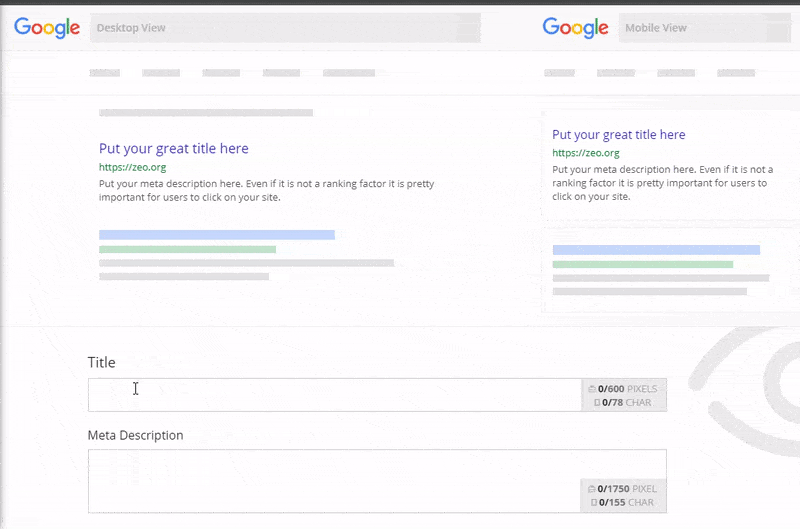Others
How to Improve On-Page SEO: 7 SEO Improvements to Skyrocket Results
Here’s a great article from WebFX Blog
On-page SEO is essential to the success of any website, and if you’re reading this page, you likely already know the massive impact a successful on-page SEO campaign can have on your business.
Regardless of whether you have an existing on-page SEO campaign, or you’re starting from scratch with a new website, we’re here to talk about how to improve on-page SEO.
This page is for you if:
- Your current on-page SEO is outdated
- Your current on-page SEO isn’t driving results
- You just built a new website and need an on-page SEO strategy
If you want to speak directly with a marketing specialist about how to improve on-page SEO, contact us at 888-601-5359! To see all the details on paper, keep reading!
What is on-page SEO?
The definition of on-page SEO is more straight forward than you might think.
There are two buckets of SEO — on- and off-page.
On-page SEO includes any strategies that you implement on your website. These strategies might include things like:
- URL optimization
- Title and meta tag optimization
- Keyword optimization
- Site speed optimization
- Internal linking
- And more
On the other hand, off-page SEO includes strategies, like link building, that help your site rank better in search but take place off your site.
Read more about off-page SEO here
How does on-page SEO improve search rankings?
On-page SEO can drastically improve your search rankings. But how?
Google’s algorithm decides which content to display in search results for various queries. Following site and content guidelines that satisfy the algorithm will improve your search rankings — and on-page SEO consists of strategies that help you do just that.
Google’s algorithm ranks content based on relevance and how well it matches a user’s search intent.
So, for example, the on-page SEO strategy keyword optimization helps your content appear more relevant to interested users. The strategy of title and meta tag optimization can also help your content appear relevant.
On-page SEO strategies also include some factors that are unrelated to making your content relevant. Site speed, for example, is something else that Google looks at when determining how your page will rank.
Google wants to provide users with the best possible experience when they send them to a website, and the speed of your site is a huge element of user experience.
When you combine on-page SEO strategies, you’ll see an improvement in search rankings — simply because you satisfy Google’s algorithm.
How to improve on-page SEO in 7 steps
If you want to learn how to improve on-page SEO, you came to the right place.
We’ll go over the seven most important steps to improving your search rankings and increasing SEO results with on-page strategies.
1. Get to work on titles and metas
Title tags and meta descriptions are more important than you might think.
Of course, title tags and meta descriptions both give readers an idea of what your content is about, but did you know that Google also pays attention to both?
Just as much as titles and metas give readers insights into your content, they also help Google determine how relevant your content might be to a user’s search.
That said, you should optimize your titles and metas to include your target keywords and make sure that they’re the perfect length for search engines. If either element is too long, it could get cut off in results pages — hindering users from being able to see the whole thing.
Try using a tool like the SERP Preview Tool to make sure your titles and metas are the perfect lengths for search engines.

2. Optimize your image alt tags
Your image alt tags provide context for users who can’t see the images on your site, but they also provide context for Google.
Since Google can’t see images, alt text is necessary to help Google understand the context of your images and determine if they’re relevant to your content.
Not only is it important for Google to understand your images, but providing alt text is an important element of user experience since it tells users what your image is if it’s not showing up properly, or if a user is using a screen reader.
3. Optimize for the right keywords
If you’re wondering how to improve on-page SEO, optimizing for keywords is hugely important.
Keywords are one of the biggest signals to Google that your content is relevant — meaning keyword optimization also helps you improve search rankings.
Before writing content, be sure to do extensive keyword research to decide on the most valuable short-tail and long-tail keywords to use.
If you’ve already written content and you’re looking to improve your on-page SEO efforts with keyword optimization, simply look for ways to incorporate more high-value keywords into existing content.
You could do this by:
- Adding more content about a relevant topic targeting a high-quality keyword
- Swapping out low-value, short-tail keywords for more valuable ones
- Adding high-value keywords to existing content
4. Create content — a lot of it
The only way to show up in search results is to create content. It’s crucial that you come up with a content calendar to help you stay on track with consistent content creation and implementation for a number of reasons.
Here’s why content is so important to increase SEO results:
- Google loves when sites consistently publish fresh content
- The more content you create, the more keywords you can target
- The more content you have available to users, the more opportunities they’ll have to find you
- The more variety of content you create, the more you’ll be able to utilize various platforms
Speaking of the variety of content, you don’t just have to stick with creating content. In fact, Google likes to see a variety of content that appeals to users in different ways.
For example, here are some content formats that are different from typical written website content:
- Videos
- Infographics
- Podcasts
- Guides
These different kinds of content can help you appeal to your audience in different ways, and also allow you to post content on different platforms.
For example, if you create a video for your website content, you could also post it to your social media accounts.
5. Optimize your site for speed
Speed is the name of the game when it comes to improving SEO. Site speed is something that users are especially finicky about — thanks to the “instant satisfaction or else” mentality.
Did you know that if your site takes longer than three seconds to load, users could leave?
This makes it crucial to have a site that loads quickly so that you can keep users on your website.
Site speed affects your on-page SEO for these reasons:
- Site speed contributes to user experience. If your site takes a long time to load, Google chalks it up to not providing the best user experience to users which could affect your ranking.
- Site speed could increase the bounce rate, which is a metric that measures the percentage of single-page sessions. A high bounce rate is a negative signal to Google.
There are a few easy ways that you can tie up loose ends on your site to improve your page speed. Here’s how:
- Compress your images with a tool like Kraken
- Get rid of unnecessary code
- Use browser caching
- Improve server response time
- Remove render-blocking JavaScript
If you’re still not satisfied with your site’s page speed, you can always contact an agency like WebFX that offers page speed optimization services!
6. Create a strong internal linking profile
Internal linking is when your content links to other pages on your site. In the example below, the flower company, Floret Flowers, wrote a blog about their new book launch. In their content, they included a number of hyperlinks, and many were to pages on their own site.
This one took users to a page on their site where you could buy the newly-launched book.

This kind of linking helps Google index your pages faster since it gives a roadmap of your website. These internal links create a web for Google, but it also creates a web for users.
Users could find a single page on your site from search engine results pages, but because of internal linking, they could end up on many other pages of your site.
In the long run, taking the time to improve your internal linking structure could help increase metrics like time on site, the number of pages visited, and more.
7. Make your site mobile responsive
These days, this step should go without saying. With around 2 billion people currently accessing the internet with only their smartphones, it’s crucial that your website is mobile responsive.
When your site is mobile responsive, you can rest assured that no matter what device people use to access your site, it will look and operate the same.
For example, a mobile responsive site will make it easy to fill out a form on a mobile device. On the other hand, if users access a form from their smartphones on a site that isn’t mobile responsive, they’ll likely have a difficult time.
If you want to ensure that your site is mobile responsive and ready for any device, check out WebFX’s mobile responsive website design services.
Do you still need help to improve search rankings?
If you’re overwhelmed by our on-page SEO strategies, we completely understand — and we’re here for you! WebFX is a full-service digital marketing agency that specializes in all things SEO.
We work with a variety of industries in a variety of locations around the world to help them improve their search rankings and increase their SEO results.
We also offer more than 50 digital marketing strategies that are supplemental to your SEO campaign. In addition to the strategies mentioned on this page, some of our other services include:
- Pay-per-click advertising (PPC)
- Social media marketing
- Web design
- Voice search optimization
- Amazon, Walmart, and Target marketing
- Geofencing advertising
- And so much more
If you’re ready to improve your on-page SEO, WebFX is here for you.
Contact us online or give us a call at 888-601-5359 to get started!
The post How to Improve On-Page SEO: 7 SEO Improvements to Skyrocket Results appeared first on WebFX Blog.
